
Calculating mph/rpm/Gear Ratio/Tire Size
By Dean Larson
As purveyors of specialty vehicles, many of you are probably familiar with the formula that relates rpm, mph, gear ratio, and tire size. My boss and I had been going over the formula, looking at some center sections for an 8-inch rear end he’s building and I got to thinking: is this a pretty fool proof approach, or could you botch it pretty bad if you weren’t careful? So sensing an excuse to leave my desk, I grabbed a tape measure and headed out to the parking lot.
The standard formula that relates these five terms is this:
rpm = (mph x Rear End Ratio x 336) / Tire Diameter
I knew my rear axle ratio was 4.10:1 and measured my tire height (on blacktop) and came up with an average of about 31 inches. I headed out to the highway and got my truck up to 65 mph in overdrive and set the cruise. I chose 65 instead of the standard 60 mph because it resulted in a perfect 2,400 rpm. Reluctantly, I headed back to my desk to crunch some numbers.
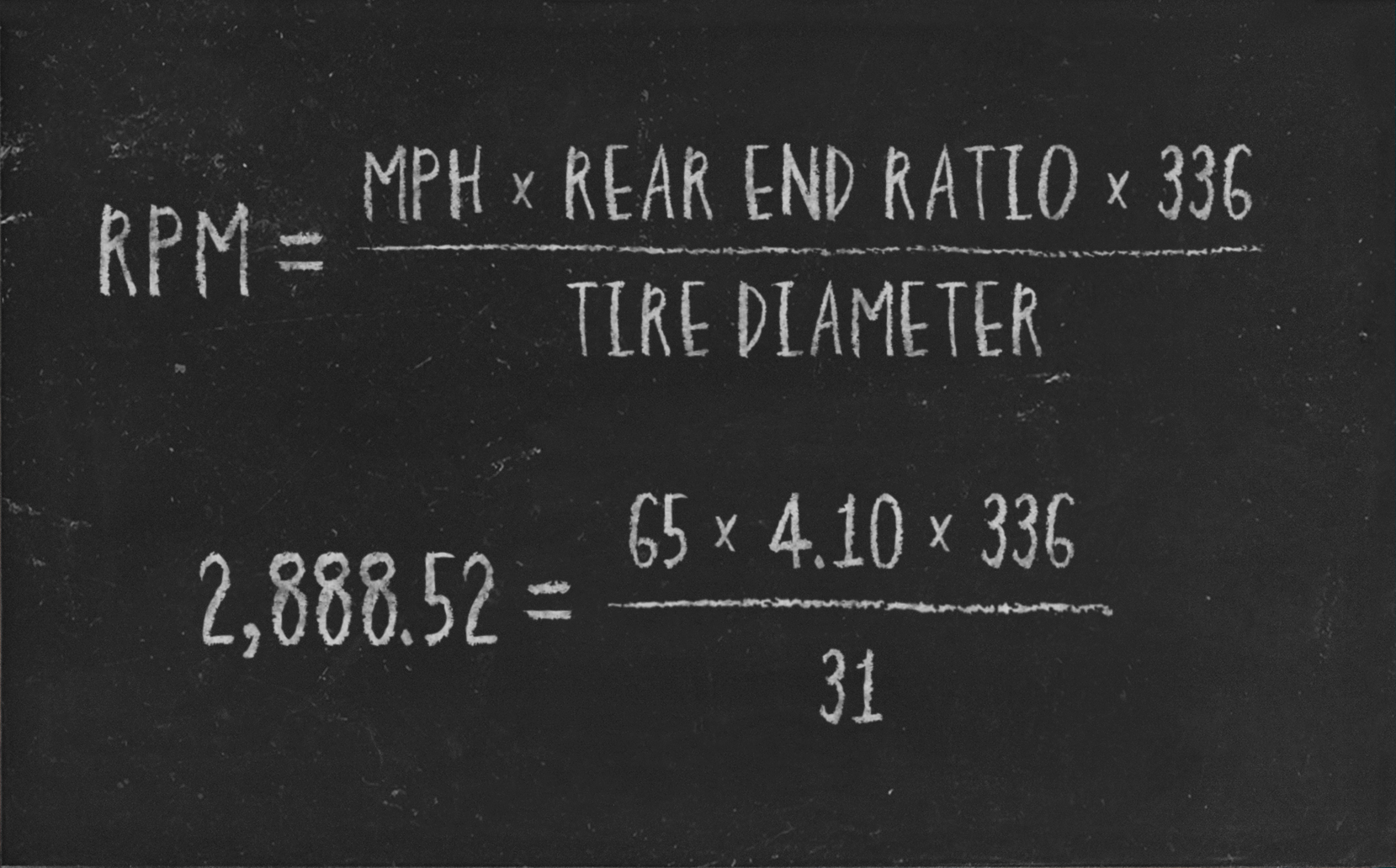
What the heck happened here? The difference of 488+ rpm is definitely a significant difference for anyone taking the time to do ALL THIS MATH. Could it be the constant term “336” that causes such a margin of error? Nope. The number 336 actually comes from reducing the original equation to a more manageable form. (See image below) But speaking of the original equation, you’ll see that there’s a component in the long version that isn’t accounted for in the simplified version—transmission ratio. Often, older transmissions had a 1:1 drive ratio in the highest gear. My truck isn’t exactly new, but it does have an overdrive ratio that’s less than one. After factoring in my overdrive ratio of 0.77 into my equation, I came up with 2,224.16, closer, but still not really acceptable.
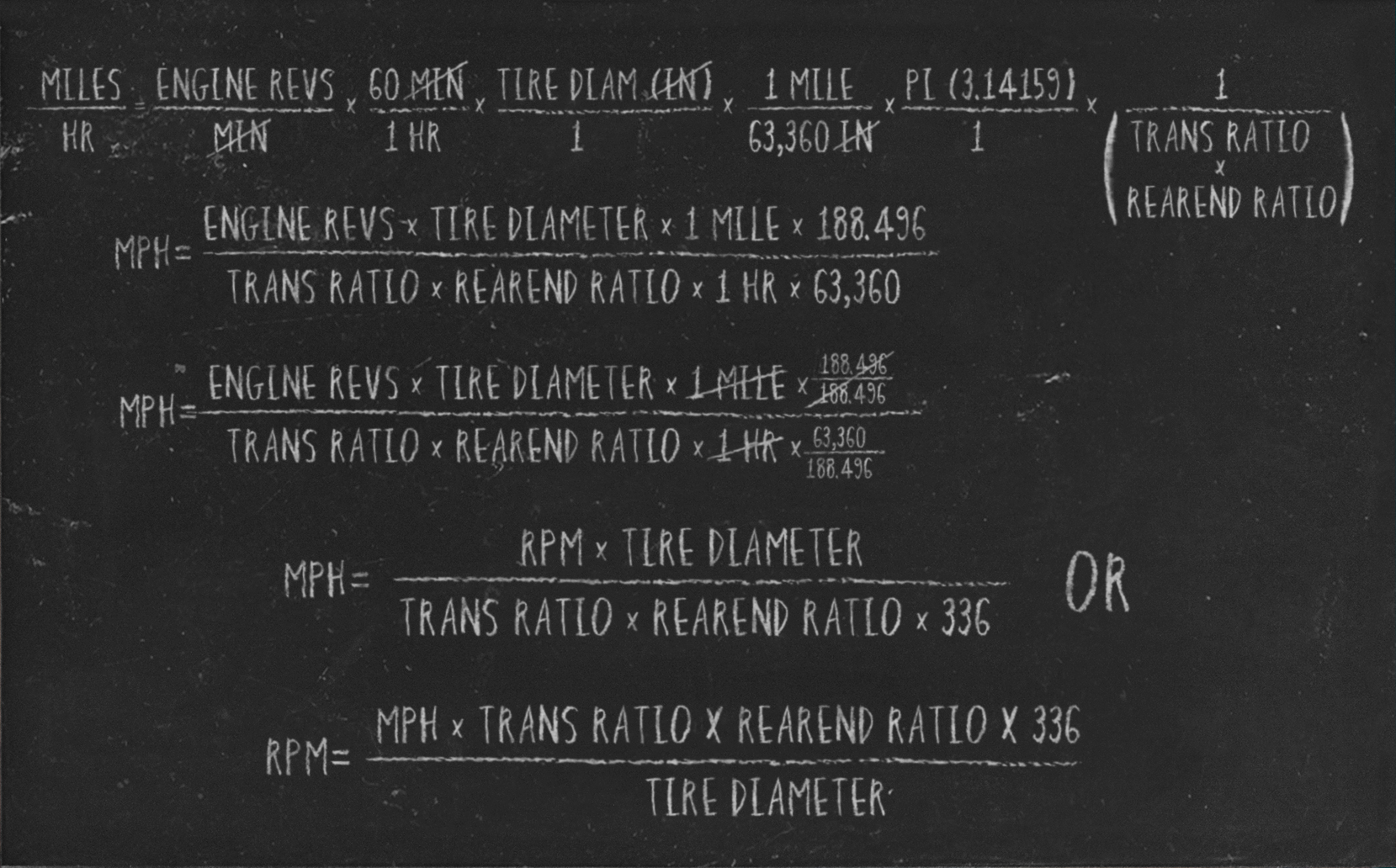
So in one final effort to get to get it right, I stole the keys to my boss’s new 4Runner and downloaded a GPS speedometer app and headed out for a second run. (I guessed my boss’s new 4Runner might have more precise instrumentation, but this was mostly just an excuse to drive my boss’s new 4Runner.) 70 mph made for a nearly perfect 2,000 rpm, so that’s where I set the cruise. When I got back, I measured the tire size with the tape measure again, but also double-checked my measurement by using a tire size calculator found here.
Using the more accurate measurement from the tire size calculator and the full version of the formula (including trans ratio) I got an answer of 1,971.85 rpm—spot on!
There are a couple takeaways here if you’re looking to use this equation. For one, you have to start with the most accurate measurements possible. When my answer was 175.84 rpm short in the second attempt, it can probably be attributed to the tire size measurement. Even when using a straight edge, it’s difficult to get a precise tire height measurement with a tape measure, so the tire size calculator is a great resource. The real takeaway here is the incorporation of the transmission ratio. If you don’t incorporate the transmission ratio and the transmission drive ratio is not 1:1, you might not be satisfied with your new gear swap. This also allows you to determine rpms for any gear, not just your highway gear. Just swap the transmission ratio for a different gear’s ratio and further dial in your setup.


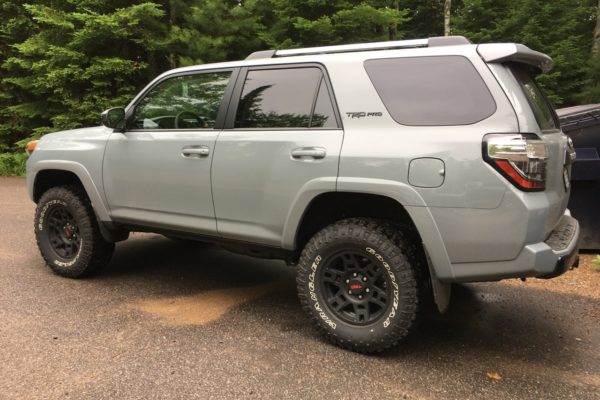
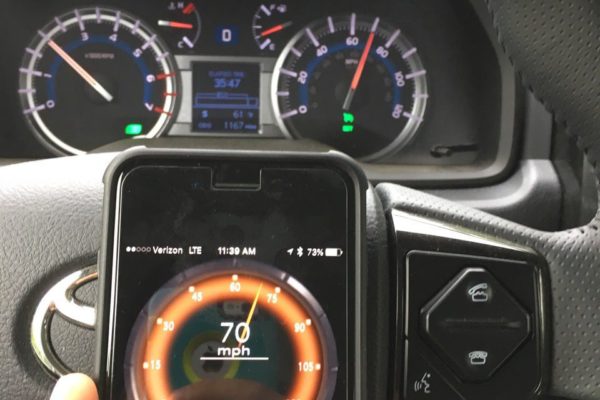

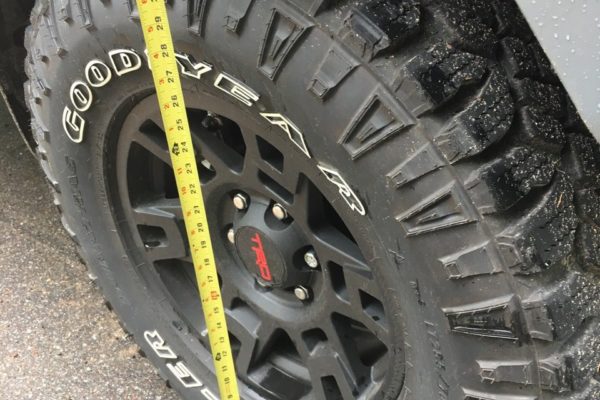
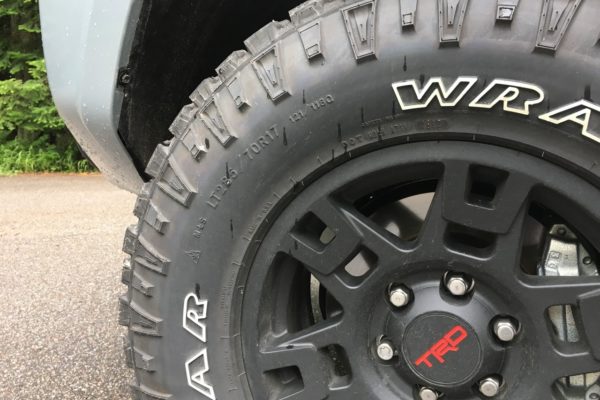




Comments for: Calculating mph/rpm/Gear Ratio/Tire Size
comments powered by Disqus